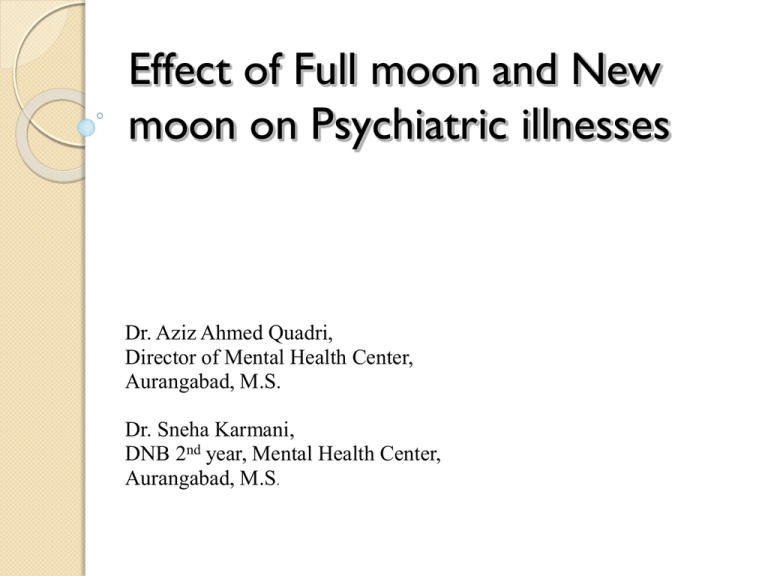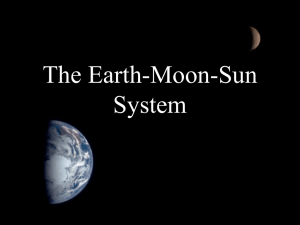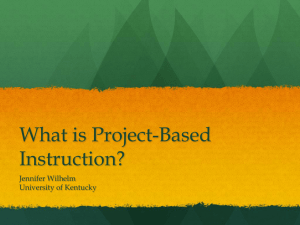
Effect of Full moon and New
moon on Psychiatric illnesses
Dr. Aziz Ahmed Quadri,
Director of Mental Health Center,
Aurangabad, M.S.
Dr. Sneha Karmani,
DNB 2nd year, Mental Health Center,
Aurangabad, M.S.
Introduction:
The superstitions about the moon’s effect on life on
earth have existed for centuries.
We often hear someone say, “Is there a full moon
around?”
As an educated person one would rubbish such a
thought, or simply get amazed, and move on.
Psychiatry & the moon:
Often in psychiatric hospitals there are anecdotal
evidences of someone getting violent on a full
moon, or disappearing in a fugue or becoming
withdrawn on a new moon.
There are several incidences when the patients
themselves or their family members complain of
fluctuations in their mood or behavior around full
moon or new moon time.
The Lunar Effect
The word ‘lunatic’ was frequently used to denote
mentally ill persons once upon a time, is derived
after the Roman goddess of moon, Luna.
The influence of the moon on behavior has been
called "The Lunar Effect" or "The Transylvania
Effect."
The original meaning of the phrase new moon was
the first visible crescent of the Moon, after
conjunction with the Sun.
N
e
w
The astronomical new moon is sometimes known as
the dark moon , thus on new moon day, the nonilluminated, i.e. dark side of the Moon faces towards
Earth.
M
o
o
n
The new moon marks the beginning of the month in
lunar calendars such as the Muslim calendar, and in
lunisolar calendars such as the Hebrew, Hindu, and
Buddhist calendars.
People generally wait for new moon to start new
works.
N
e
w
M
o
o
n
Full moon is a lunar phase that occurs when the
Moon is on the opposite side of the Earth from the
Sun.
Full Moons are traditionally associated with
temporal insomnia, insanity (hence the terms
lunacy and lunatic) and various "magical
phenomena" such as lycanthropy.
F
U
L
L
M
O
O
N
The full moon has been linked to crime,
suicide, mental illness, disasters, accidents,
birthrates, fertility, and werewolves, among
F
U
L
L
other things.
Some people even buy and sell stocks
according to phases of the moon.
M
O
O
N
Earlier times:
Greek philosopher Aristotle and Roman historian Pliny
the Elder suggested that the brain was the “moistest”
organ in the body and thereby most susceptible to the
pernicious influences of the moon, which triggers the
tides.
Belief in the “lunar lunacy effect,” or “Transylvania
effect,” persisted in Europe through the Middle Ages,
when humans were widely reputed to transmogrify into
werewolves or vampires
during a full moon.
Present times:
Even today many people think the mystical powers of the full
moon induce erratic behaviors, psychiatric hospital admissions,
suicides, homicides, emergency room calls, traffic accidents, fights
at professional hockey games, dog bites and all manner of strange
events.
One survey revealed that 45 percent of college students believe
moonstruck humans are prone to unusual behaviors.
Another surveys suggest that mental health professionals
may be still more likely than laypeople to hold this
conviction.
In 2007 several police departments in the U.K. even added
officers on full-moon nights in an effort to cope with
presumed higher crime rates.
•
Lunacy and the Full Moon: Does a full moon really trigger strange
behavior? By Scott O. Lilienfeld and Hal Arkowitz | February 9,
2009 | 52; Scientific American Mind.
Spiritual science:
There are some finer differences between the effect
of new moon and full moon on man.
Spiritual science:
Finer differences between the effect of new moon and
full moon on man.
Full moon effect
Adverse more on the
physical body
more apparent,
Therefore more
distressing.
New moon effect
More on the mind.
More intangible
(subtle).
Between new moon and full moon the effects of new
moon are less noticeable to us.
Ion theory
Ions have an effect on body’s hormones and chemical
messengers which affect the brain.
All the air you breathe has some quantity of Aero-Ions.
Ions are charged particles in the air (100-1000/cmm).
Some ions are negatively charged (Negative Ions) and
some positively charged (Positive Ions).
Ion theory
Ion Scientists have determined over and over that an
imbalance in the ratio between Positive and Negative Ions has
a profound effect on both your mental and physical well
being.
If you breathe large amounts of positive ions without an
equal amount of negative ions, you will actually become
lethargic and in some cases sick (high positive ion
concentrations in the air are associated with the full moon).
Air containing more negative ions and fewer positive
ions has shown to be beneficial and without side
effects.
Hormonal reactions to increased positive ions in the
air (Full Moon Effect) cause hyperactivity,
depression, violent behavior, road rage, higher
occurrences of migraines and asthma. Even bees are
known to sting without provocation on higher
positive ion ratios.
75% of the general population react favorably to
negative ions but are adversely affected by positive
ions, while the other 25% react in the opposite way,
finding higher positive ion days euphoric and higher
negative ion days boring. These people compensate
for the stress caused by positive ions with sufficient
adrenaline production.
In other words, 75% of the general population goes
into different ranges of depression and 25% become
hyperactive. We are all affected somewhat by higher
positive ion ratios. There are no side effects from
negative ions
Moon’s effect on water
The full moon’s supposed effects on behavior arise
from its influence on water as the human body is ~80
%water (Miami psychiatrist Arnold Lieber) perhaps the
moon works its mischievous magic by somehow
disrupting the alignment of water molecules in the
nervous system.
But there are at least three reasons why this explanation
doesn’t hold true.
1.
the gravitational effects of the moon are far too
minuscule to generate any meaningful effects on brain
activity, let alone behavior. a mosquito sitting on our
arm exerts a more powerful gravitational pull on us
than the moon does.
2.
The moon’s gravitational force affects only open
bodies of water, such as oceans and lakes, but not
contained sources of water, such as the human brain.
3.
The gravitational effect of the moon is just as potent
during new moons—when the moon is invisible to
us—as it is during full moons.
To find out the correlation between phases of the moon
and symptoms of psychiatric patients.
A total of 200 psychiatric in-patients and out-patients were
interviewed.
Methodology:
History was reviewed in brief. Patients were assigned to
ICD-10 broad categories as per the diagnosis.
Reported change in symptoms/severity with respect to full
moon and new moon or peri- full moon and peri-new moon
was recorded as per the pre-designed questionnaire.
The questionnaire consisted of basic socio-demographic
data, along with questions probing into the details of
diagnosis, duration of illness and treatment.
It later included questions on effect of full moon and new
moon as perceived by patients and their family members.
Age group
Age
group
Yes
respondents
No/
don’t
know
No. of
respondents
years were more
10-20
15
(37.5%)
25
40
likely to hold such
21-30
26
(32.5%)
54
80
beliefs than
31-40
15
(28.84%)
37
52
41-50
4
(22.22%)
14
18
50-70
4
(40%)
6
10
total
64
136
200
People over 50
patients in other
age groups.
Sex:
Sex
Yes
No/
don’t
know
No. of
respond
ents
Females were twice as
likely as males to believe
Male
28
(20.74 107
%)
135
Femal
e
36
(42.35 49
%)
85
Total
64
136
200
in lunar effect.
Marital status:
Marital Yes
status
No/
No. of
don’t respon
know dents
divorced
1
20%
4
5
Engaged
1
24%
3
4
married
44
34.92
%
82
126
Separated
3
33.33
%
6
9
There wasn’t much
difference between
marital status of
candidates and belief in
lunar effect.
unmarried
15
30%
35
50
widow
0
0%
6
6
Total
64
136
200
Education:
Prevalence was
Education
Yes
Illiterate
10
No/
No. of
Don’t know respondents
55.55%
8
18
Pre-primary 0
0%
1
1
Primary
8
34.78%
15
23
Secondary
29
31.52%
63
92
Higher
secondary
10
27.02%
27
37
Graduation
6
28.57
15
21
increasing education
Postgraduation
1
12.5%
7
8
levels
Total
64
136
200
highest in the
illiterate, with
decrease in such
beliefs seen with
Religion:
Religion
Buddhist
No of yes
respondents
3
23.07%
No/
don’t
know
No of
respondents
10
13
Such belief was
slightly more
common in Hindus
Hindu
23
33.33%
46
69
than Muslims,
Christian
0
0%
1
1
Muslim
38
32.47%
79
117
followed by
Buddhists.
Others
0
total
64
0%
0
0
136
200
Occupation:
Occupation
No. of Yes
respondents
No/
don’t
know
No. of
respondents
class were more likely
Business
2
16.66%
10
12
to have such a belief,
Farming
8
34.78%
15
23
Labour
13
50%
13
26
followed by farmers,
Professional
1
14.28%
6
7
housewives and
Retired
0
0%
2
2
Unemployed 4
26.66%
11
15
housewife
30
31.91%
64
94
student
5
31.25
11
16
others
1
20%
4
5
total
64
136
200
Patients from labor
students.
Residence:
Residence
Yes
respondents
No/
don’t
know
No. of
respondents
Rural
40
35.08%
74
114
Urban
24
27.90%
62
86
Total
64
136
200
Patients from rural
population were
slightly more likely
than urbanites to
believe in the lunar
effect.
Type of family:
Type of
Family
No. of
Respondents
No/
don’t
know
No. of
Respondents
There was not
much difference
Nuclear
29
32.22%
61
90
between belief in
Joint
35
31.81%
75
110
lunar effect in
Total
64
136
200
patients coming
from joint or
nuclear families.
Social class:
Social
Class
No. Of yes
Respondents
No/
don’t
know
No. Of
Respondents
Upper
High
0
0%
0
0
High
0
0%
1
1
such beliefs, followed by
Upper
middle
7
18.42%
31
38
lower middle class
Lower
middle
34
35.41%
62
96
and poor patients
Poor
20
33.33%
40
60
BPL
3
60%
2
5
Total
64
136
200
Patients from below
poverty line had
highest percentage of
Diagnostic
categories:
Code
ICD-10 Category
No. of Yes
Respondents
No/
don’t
know
No. of
Respondents
F10F19
Mental and
behavioral disorders
due to psychoactive
substance use
5
71.42%
2
7
F20F29
Schizophrenia,
schizotypal and
delusional disorders
3
5
32.71%
72
107
disorders held such
F30F39
Mood (affective)
disorders
1
6
26.66%
44
60
beliefs, followed by
F40F48
Neurotic, stressrelated and
somatoform disorders
7
31.81%
15
22
F50F59
Behavioral syndromes
associated with
physiological
disturbances and
physical factors
0
0%
2
2
F90F98
Behavioral and
emotional disorders
with onset usually
occurring in childhood
and adolescence
1
50%
1
2
136
200
Majority patients with
substance-related
childhood/
adolescent
disorders, followed
by schizophrenia
and neurotic
disorders
Total
64
Effect of
moon
No of
respondents
Yes
No
64
103
Don’t
know
Total
33
200
Difference noticed by:
No. of Respondents
Patient
16
Family members/Care-givers
22
Both Patient & Care-givers
26
Total
64
Noticed fluctuation in emotion and
behavior prior to illness
Most of the patients
noticed the lunar
effect on their
behavior/ emotion
after onset of their
illness
Noticed
fluctuation
in emotion
and
behavior
prior to
illness
Yes
No
Total
No. of
Respondents
6
58
64
Duration of illness:
There was no
significant difference
between duration of
illness and such beliefs.
.
Duration
of illness
No. of
Responde
nts
No/ don’t
know
No. of
Responde
nts
Less than
6months
9
34.
61
%
17
26
>6months
< 1year
8
32
%
17
25
>1year <
3years
16
36.
36
%
28
44
>3 years
31
29.
52
%
74
105
Total
64
136
200
Regular on t/t and Follow up
People who were not
regular on T/t and
F/up were more likely
to hold such beliefs.
Probably their belief
Regular
on
t/t
and
Follo
w up
Yes
Yes
58
resp
onse
irregularity seen in T/t
No. of
responden
ts
125
183
6
9
%
No
6
in same could
contribute to the
31.
No/ Don’t
know
35.
11
17
2
9
%
Total
64
136
200
Effect of T/t on symptoms
92% of patients
believed that
treatment had
decreased their
symptoms
Effect of t/t on
symptoms
Increased with
t/t
Decreased with
t/t
No effect of t/t
on symptoms
This was
patient’s first
visit
Total
No. of
Respondents
0
59 (92.18%)
3
2
64
Whether symptoms were same
or different?
Most of them perceived
the same symptoms
as that of their primary
psychiatric
symptomatology during
the full moon/ new
moon.
Symptoms
are
No. of
Respondents
Same
61
Different
2
Same, with
1
new/different
symptoms
Total
64
Frequency of perceived change
1/3rd
reported a change
with every cycle, 1/3rd
with most cycles and 1/3rd
Frequency of
perceived
change
No. of Respondents
Occasional cycles only
21
Most Cycles
21
Almost every lunar
cycle
22
Total
64
patients with occasional
cycles only.
Severity concurrent with the lunar
phase:
Severity as perceived
by Yes
Respondents
No. of Respondents
symptom severity
More Severe
64
increased with full
No change
0
moon/ new moon.
Total
64
100% patients (yes
responders) believed
Studies showing a positive
correlation
18,495 records from patients admitted to a psychiatric
hospital in an 11-year period: admissions for psychosis
were highest during the new moon and lowest during
the full moon. [Reference: Lunar madness: an empirical
study (1977)]
25,568 psychiatric emergency room visits in a 13-year
period: visits increased near the first quarter moon
and a decreased around the new moon and full
moon. [Reference: Human aggression and the lunar synodic
cycle (1978)]
Psychologists, however, have found that there is no
strong evidence for effects on human behavior
around the time of a full moon.
They find that studies are generally not consistent,
with some showing a positive effect and others
showing a negative effect.
Kelly, Rotton, and Culver suspect four factors:
i.
Media effects,
ii.
Folklore and tradition,
iii.
Misconceptions, and
iv.
Cognitive biases.
v.
A fifth factor should be considered, as well:
Communal reinforcement
The media perpetuate lunar myths.
Full moon and lunar effects; The Skeptic’s Dictionary.
76,065 calls to a crisis center in a 4-year period:
increased calls by females during the new moon
period; decreased calls by males during the new
moon period. [Reference: Sex difference in response
to stress by lunar month: a pilot study of four years'
crisis-call frequency. (2003)]
Moonstruck! Does The Full Moon Influence Behavior? washington.edu/
neuroscience for kids
Why the association between
craziness and the moon?
It is an ancient science that has not been replaced with
the newer theories.
The moon, however, holds no sway in the scientific
prospective of the world, but in people’s minds,
It functions as such a key figure that it would be foolish
to say the full moon completely and utterly lacks
control over events.
Instead of directly studying the moon’s influence on the
world, the power of common belief should be
investigated
When people feel the same way about something, they
create a large enough mental influence that they can
sometimes will the event they imagine into a reality.
THANK YOU









